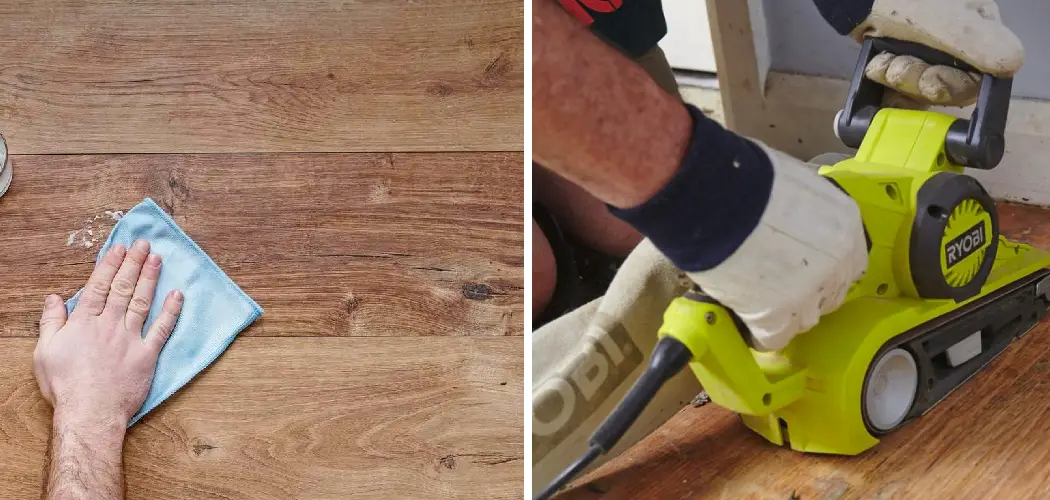Removing vinyl from wood surfaces can be a daunting task, but with the right techniques and tools, it’s entirely possible to restore the natural beauty of the wood underneath. Whether you’re dealing with old vinyl flooring, adhesive residue, or vinyl decals on wooden furniture, knowing how to remove vinyl from wood is essential.
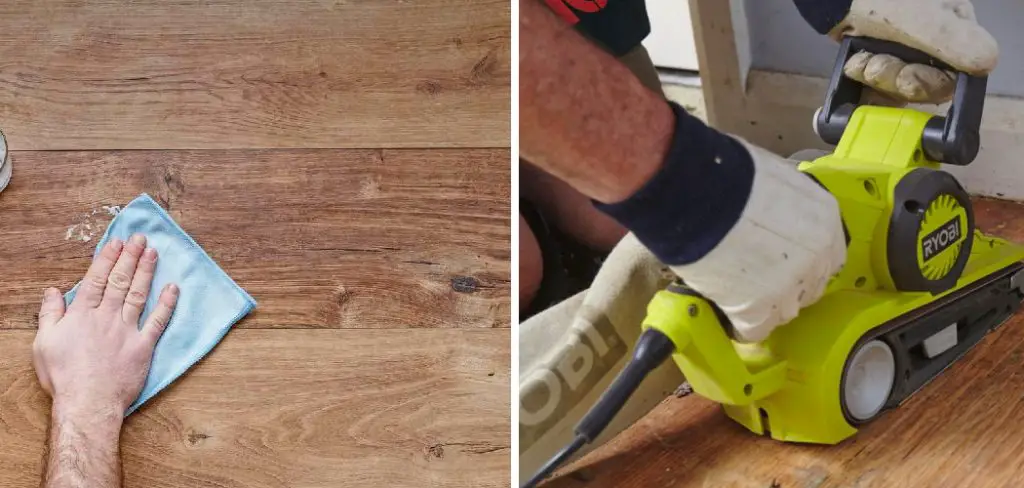
Vinyl removal from wood requires patience, careful preparation, and the use of appropriate methods to ensure a successful outcome. In this article, we will explore step-by-step instructions and helpful tips for safely removing vinyl from wood surfaces. By following these techniques, you can tackle vinyl removal projects with confidence and restore the original appearance of your wood surfaces, revitalizing your space and enhancing its aesthetic appeal.
Why Vinyl May Need to Be Removed from Wood Surfaces
There are several reasons why vinyl may need to be removed from wood surfaces. Over time, vinyl can wear out and become unsightly, with peeling edges and discoloration detracting from its appearance. In some cases, vinyl adhesives may break down, causing the material to lift and creating a hazard in areas with foot traffic.
Additionally, the desire to return to the original wood finish or to apply a new type of surface treatment can drive the decision to remove vinyl coverings. Whatever the reason, the removal process should be approached with care to avoid damaging the underlying wood.
Emphasizing Safety During Vinyl Removal from Wood
Prioritizing safety during the vinyl removal process is crucial to prevent damage to the wood surface and to avoid personal injury. The use of sharp tools and chemicals often required for this task poses potential risks that must be mitigated through proper precautions. It is essential to wear protective gloves to shield hands from splinters, cuts, or exposure to harsh adhesives.
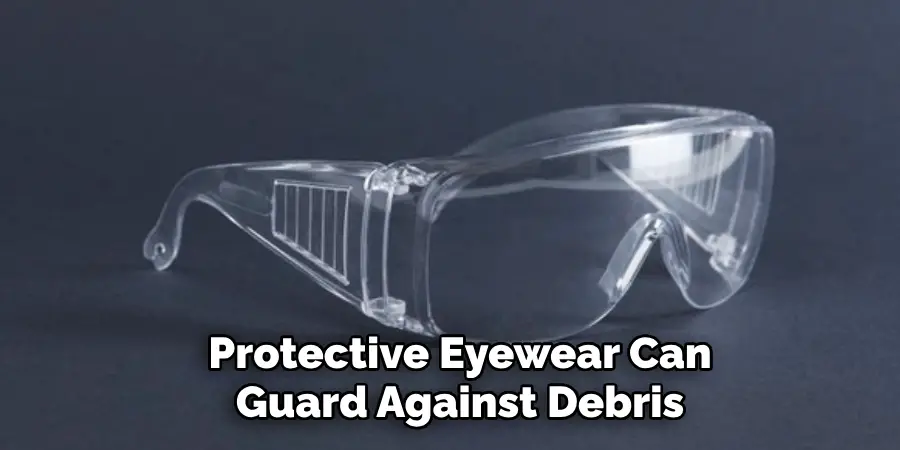
Protective eyewear can guard against debris and chemical splatters. Additionally, working in a well-ventilated area is important, especially when using solvent-based adhesive removers that may release fumes. Taking these safety measures seriously ensures that the project can proceed smoothly and safely, preserving both your health and the integrity of the wood.
Tools and Materials Required
Embarking on the vinyl removal process requires gathering the correct tools and materials to ensure efficiency and safety. Essential items include:
- Heat Gun or Hair Dryer: Aids in loosening the adhesive by applying heat to the vinyl.
- Plastic Putty Knife or Scraper: Used to gently lift and peel the vinyl without scratching the wood surface.
- Adhesive Remover: Helps dissolve any remaining adhesive after the vinyl has been peeled away.
- Clean, Soft Cloths: Necessary for wiping away residue and cleaning the wood surface post-removal.
- Protective Gloves: Essential for hand protection against chemicals and sharp edges.
- Protective Eyewear: Shields eyes from harmful debris and chemical splashes.
- Fine-grit Sandpaper: Used to smooth the wood surface after vinyl and adhesive have been removed.
- Wood Finish or Sealant (Optional): For those looking to refinish the wood after vinyl removal.
- A Bucket of Warm, Soapy Water: Useful for softening the vinyl and adhesive, making it easier to remove.
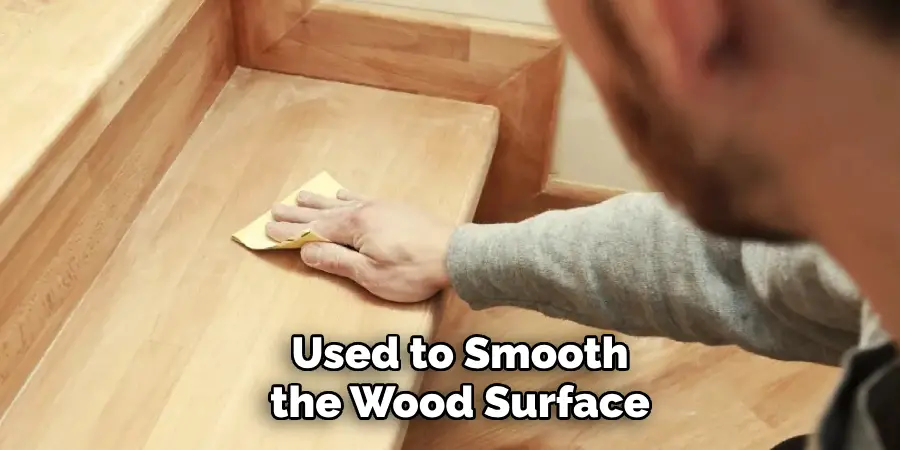
By preparing these tools and materials in advance, you can approach the project methodically, reducing the risk of damage to the wood or personal injury.
Assessing the Vinyl and Wood Surface
Before beginning the vinyl removal process, it is essential to thoroughly assess the condition of both the vinyl and the underlying wood surface. Check for signs of wear and tear on the vinyl, such as cracks or brittleness, which may affect how easily it can be removed.
Additionally, look for any previous repairs or patches that might indicate underlying damage to the wood. Understanding the age and type of adhesive used is also helpful; older adhesives may have become more brittle and easier to chip away, whereas newer adhesives might require more effort to dissolve.
Take note of the type of wood and its finish, as some finishes may be more susceptible to damage during the vinyl removal process. If the wood is soft, extra caution should be taken to avoid gouging or scratching. Knowing the details of the surface you are working with will help you choose the most effective and gentle removal method, preserving the integrity of the wood for future refinishing or treatment.
Preparing the Work Area
Properly preparing your work area is critical to ensure an efficient and safe vinyl removal process. Begin by clearing the space of any unnecessary items to create unobstructed access to the wood surface.
Cover the surrounding area with drop cloths or old newspapers to protect the floor and adjacent furnishings from potential damage or mess. If possible, work in a space with good natural light or provide adequate artificial lighting to clearly see the work surface.
Secure the wood item if it’s movable, such as a chair or table, to prevent shifting while you’re working on it. If you’re removing vinyl flooring, ensure that the room is well-ventilated to dissipate fumes from any adhesive remover that you may use. Open windows and doors or use a fan to maintain good airflow.
Lastly, assemble all the necessary tools and materials you gathered earlier within easy reach. This includes positioning your heat gun, putty knife, adhesive remover, cloths, protective gear, and any other equipment you’ll need, to minimize interruptions once you begin the process. Taking the time to set up your work area carefully prevents hassle and helps avoid potential accidents or errors during the vinyl removal.
10 Methods How to Remove Vinyl from Wood
Removing vinyl from wood surfaces requires careful attention and the use of effective techniques to avoid damaging the wood. Whether you’re dealing with vinyl flooring, adhesive residue, or vinyl decals on wooden furniture, there are several methods you can use to safely remove the vinyl and restore the natural beauty of the wood underneath. Here are ten comprehensive methods for removing vinyl from wood:
1. Heat Gun Method:
Use a heat gun to apply heat to the vinyl surface. The heat softens the adhesive, making it easier to peel off the vinyl. Hold the heat gun several inches away from the vinyl and move it back and forth in a sweeping motion. Once the vinyl becomes pliable, use a putty knife or scraper to gently lift and remove it from the wood surface. Make sure to wear protective gloves when handling the heat gun, as it can get very hot.
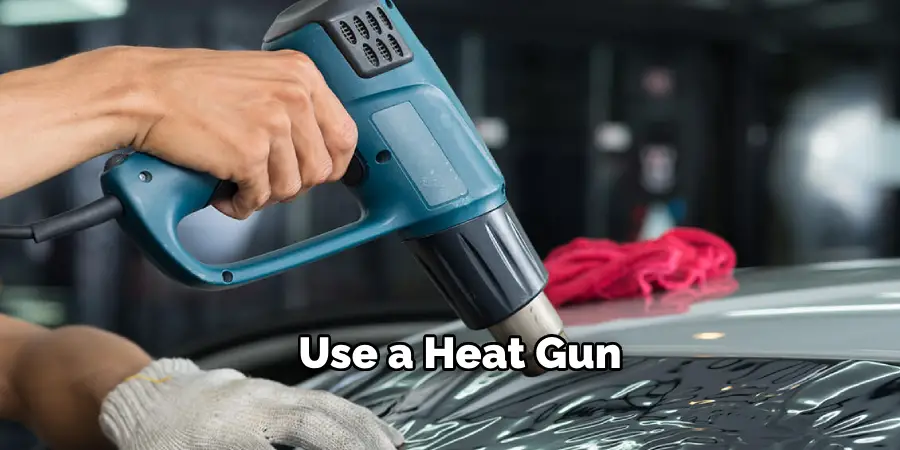
This method is effective for larger vinyl pieces or stubborn residue that may be difficult to remove with just a solvent. It also allows for more control and precision in removing the vinyl without damaging the wood surface underneath.
2. Hair Dryer Method:
If you don’t have a heat gun, a hair dryer can also be used to apply heat to the vinyl surface. Set the hair dryer to the highest heat setting and hold it close to the vinyl, moving it back and forth to evenly distribute the heat. Once the vinyl becomes warm and pliable, use a putty knife or scraper to carefully lift and peel it away from the wood surface. This method may take longer than using a heat gun, but it is still an effective way to remove vinyl without causing damage to the surface.
Additionally, if you do not have a putty knife or scraper, you can also use a credit card or old gift card to gently lift and peel away the vinyl. However, be cautious as these items may not be as sturdy and could potentially break or damage the surface.
Another alternative to using a hair dryer is using a clothes iron. Set the iron to a low heat setting and place a towel or cloth over the vinyl. Gently press down and move the iron back and forth, heating the vinyl until it becomes pliable enough to peel away from the surface.
3. Steam Method:
Fill a steam cleaner with water and heat it according to the manufacturer’s instructions. Hold the steam cleaner nozzle close to the vinyl surface and apply steam to the area for several minutes. The steam helps loosen the adhesive, making it easier to remove the vinyl. Use a putty knife or scraper to gently lift and peel the vinyl away from the wood surface. Be careful not to scratch or damage the wood underneath.
Continue steaming and scraping until all of the vinyl is removed. You may need to refill the steam cleaner with water as you work, depending on the size of the area you are removing vinyl from.
After all of the vinyl has been removed, wipe down the wood surface with a damp cloth to remove any remaining residue. If there are still stubborn pieces of adhesive, you can use a commercial adhesive remover or a mixture of warm water and vinegar to help dissolve it.
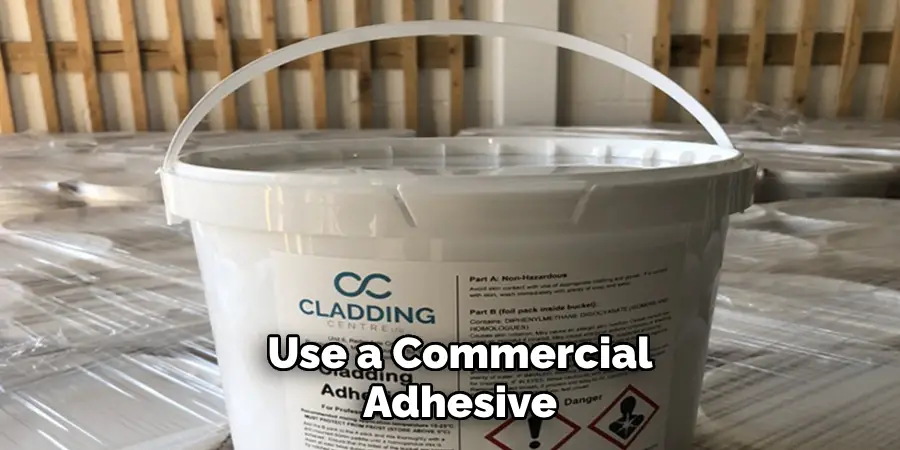
4. Solvent Method:
Apply a commercial adhesive remover or solvent to the vinyl surface. Allow the solvent to penetrate the adhesive for several minutes to dissolve it. Use a putty knife or scraper to gently lift and peel the vinyl away from the wood surface.
Be sure to follow the manufacturer’s instructions and use appropriate safety precautions when working with solvents. While this method may be effective, it can also potentially damage the wood surface if not used carefully. To avoid this, test the solvent on a small, inconspicuous area of the wood first.
5. Vinegar and Water Method:
Mix equal parts white vinegar and water in a spray bottle. Liberally spray the vinegar solution onto the vinyl surface and allow it to sit for several minutes. The acidic properties of the vinegar help break down the adhesive, making it easier to remove the vinyl. Use a putty knife or scraper to gently lift and peel the vinyl away from the wood surface. Continue spraying and scraping until all of the vinyl is removed.
Another alternative is to soak a clean cloth in the vinegar solution and lay it over the stubborn areas of adhesive. Allow the cloth to sit for several minutes before using a scraper to gently remove the adhesive.
6. Hot Water Method:
Boil a pot of water and carefully pour it over the vinyl surface. Allow the hot water to soften the adhesive for several minutes. Use a putty knife or scraper to gently lift and peel the vinyl away from the wood surface. Repeat the process as needed until all the vinyl has been removed.
Hot water can be a safe and effective method for removing vinyl from wood surfaces. This method is especially useful if the vinyl has been stuck on for a long time, making it difficult to remove with other methods.
One of the main benefits of using hot water is that it does not involve any harsh chemicals or solvents that could potentially damage the wood surface. It is also a relatively easy and inexpensive method, as you likely already have access to hot water in your home.
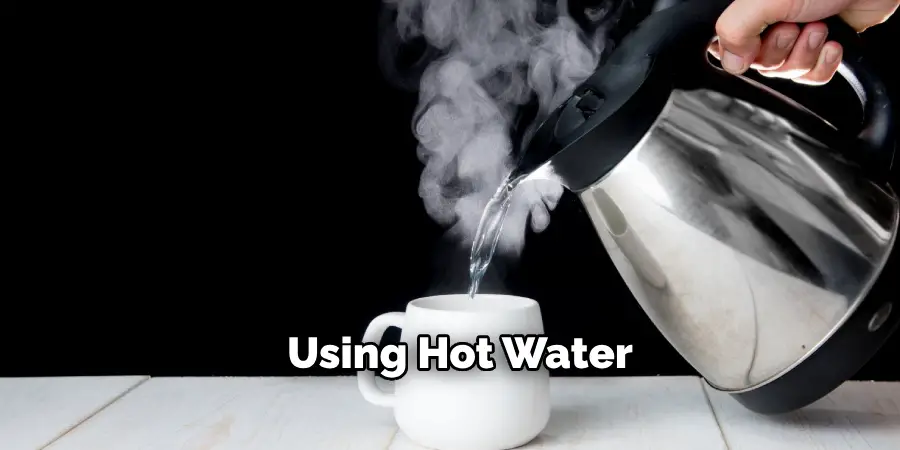
7. Rubbing Alcohol Method:
Apply rubbing alcohol to the vinyl surface using a clean cloth or sponge. Allow the rubbing alcohol to sit for several minutes to soften the adhesive. Use a putty knife or scraper to gently lift and peel the vinyl away from the wood surface. Be sure to ventilate the area when using rubbing alcohol, as it can produce strong fumes.
After using the rubbing alcohol method, use a mild soap and water solution to clean any remaining residue from the wood surface. Rinse thoroughly and dry with a clean cloth. If there are any stubborn areas, repeat the process or try using a commercial adhesive remover.
8. Commercial Adhesive Remover Method:
Purchase a commercial adhesive remover from a hardware store or home improvement center. Follow the manufacturer’s instructions for application and use appropriate safety precautions. Apply the adhesive remover to the vinyl surface and allow it to sit for the recommended amount of time. Use a putty knife or scraper to gently lift and peel the vinyl away from the wood surface. Repeat the process as necessary until all vinyl is removed.
If you are unable to find a commercial adhesive remover, there are some household items that can also be effective in removing adhesive. One option is using rubbing alcohol or nail polish remover, which contain acetone that can dissolve the adhesive. Apply the substance on a cloth and rub it onto the affected area.
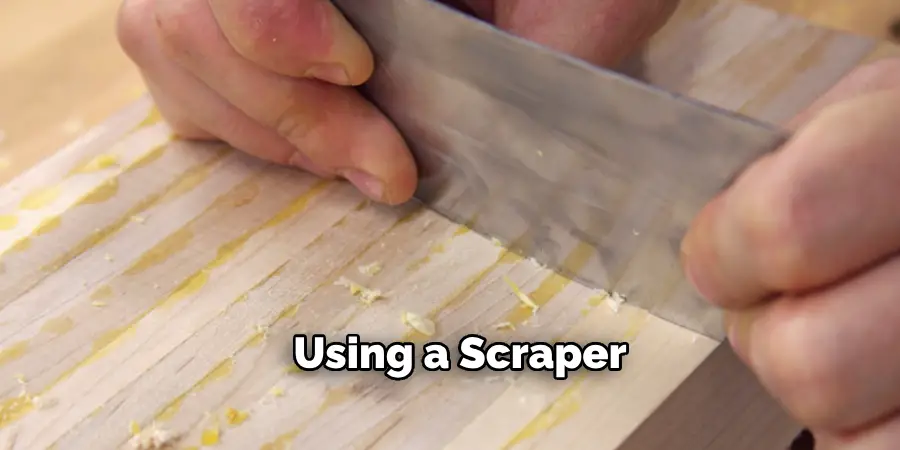
Let it sit for a few minutes before using a scraper to remove the adhesive. Another household remedy is using cooking oil, which can help loosen the adhesive. Apply it on the area and let it sit for a couple of hours before scraping off the vinyl.
9. Citrus-Based Cleaner Method:
Use a citrus-based cleaner or degreaser to break down the adhesive on the vinyl surface. Apply the cleaner to the vinyl and allow it to sit for several minutes. Use a putty knife or scraper to gently lift and peel the vinyl away from the wood surface.
Citrus-based cleaners are effective and environmentally friendly options for removing adhesive residue. They also have a pleasant scent, making it a more enjoyable cleaning experience. While this method may take a bit longer, it is a gentle and effective way to remove vinyl without damaging the wood surface.
10. Mechanical Removal Method:
If the above methods fail to remove the vinyl completely, you may need to resort to mechanical removal techniques. Use a belt sander, orbital sander, or rotary tool with a sanding attachment to carefully sand away the vinyl and adhesive residue from the wood surface.
Take care not to damage the wood while sanding and wear appropriate safety gear, such as goggles and a dust mask. Once the vinyl and adhesive are removed, clean the surface with a wood cleaner or mineral spirits to remove any remaining residue. However, mechanical removal methods can be time-consuming and may require multiple passes to completely remove the vinyl.
Final Inspection and Touch-Ups
Once you’ve successfully removed all the vinyl and adhesive residue, conduct a thorough final inspection of the wood surface. Look for any areas that may have been missed or need additional cleaning. Any remaining adhesive can be addressed with a final application of your chosen removal method, focusing on spot treatments as needed.
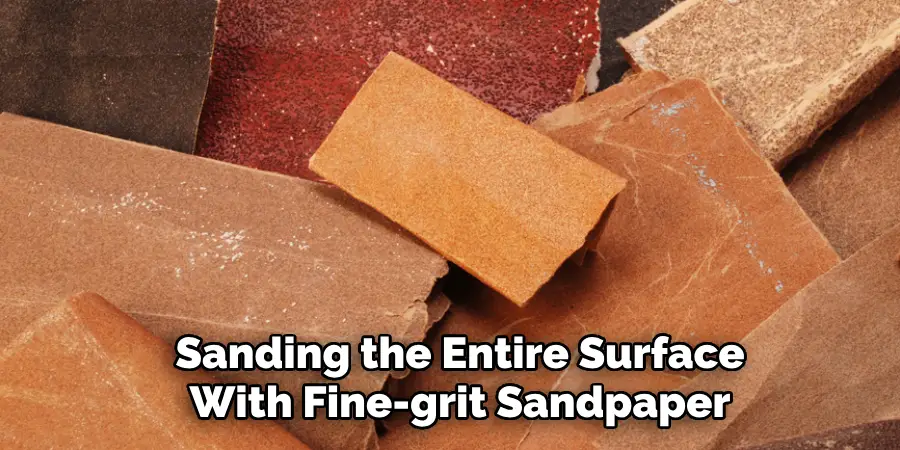
After the wood is completely clear of vinyl and adhesive, consider lightly sanding the entire surface with fine-grit sandpaper to ensure an even, smooth finish. This step also prepares the wood for any refinishing or repainting you may plan to do, allowing for better adherence of new materials.
Conclusion
In conclusion, the process of removing vinyl from wood surfaces requires patience, diligence, and the right techniques to achieve successful results without damaging the wood. Whether you opt for heat, solvents, natural cleaners, or mechanical removal methods, it’s crucial to approach the task with care and attention to detail.
Each method offers its advantages and considerations, depending on the type of vinyl, the adhesive used, and the condition of the wood surface. By following the steps outlined on how to remove vinyl from wood, you can effectively remove vinyl from wood surfaces and restore the natural beauty of the wood underneath.

